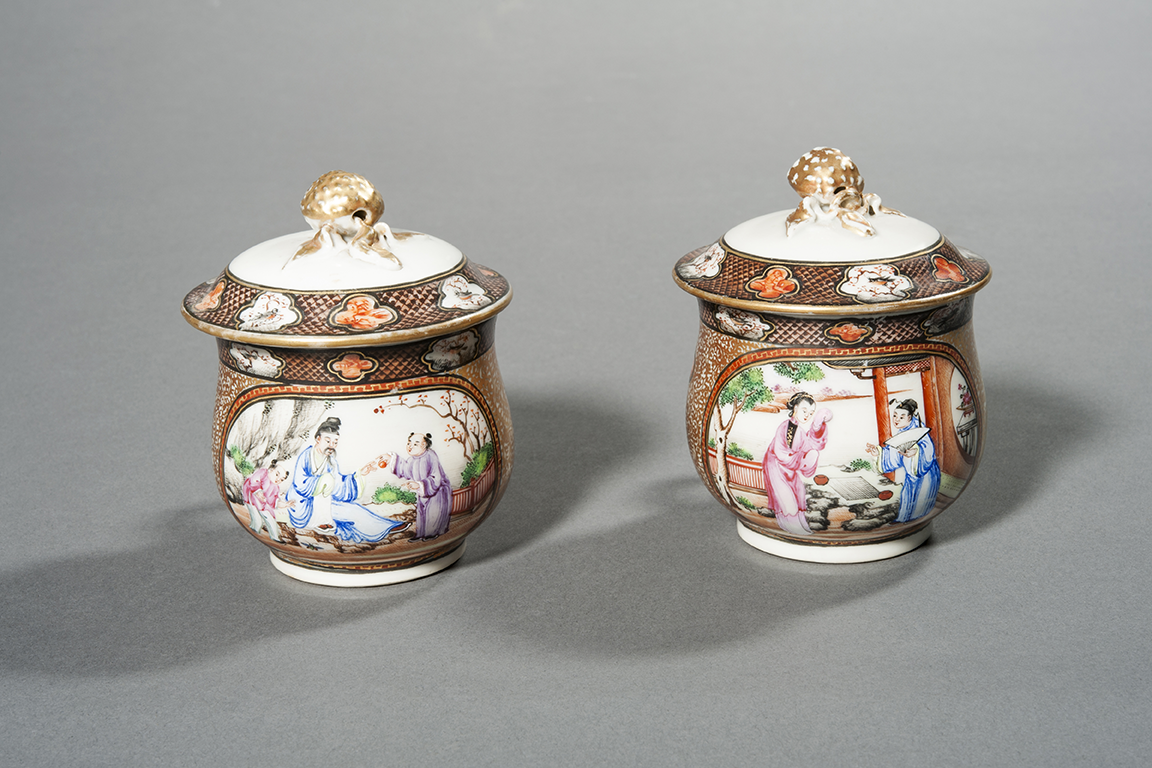Custard cups
| Object Title | Pair of custard cups |
| Origin | Jingdezhen, China |
| Date | Qing dynasty, 1644–1911, ca. 1790s |
| Material | Porcelain with gilding |
| Dimensions | height 9 and 8.7 cm |
| Collection | University Museum and Art Gallery, HKU, Donated in memory of Miss Beryl Robina Wright |
| Accession No. | HKU.C.1997.1288ab |
These custard cups are part of a larger dinner service of dishes, plates, saucers, platters, tureens, bowls and cups, suitable for a grand interior. Each object is decorated with a central scene showing different men and women among pavilions and mountainous landscapes in the famille rose palette. This palette was developed in China during the late Kangxi period by Jesuit priests working with craftsmen at the Yangxindian (‘Hall of Mental Cultivation’) within the Forbidden City. Highly popular in Europe, it is characterised by soft pinks and reds created by mixing ruby red (derived from colloidal gold) and opaque white enamel, which allowed for a large range of tones and shading.
The design of this service has been referred to as the ‘Rockefeller pattern’ since 1979, due to its association with the famous Rockefeller family of New York. John D. Rockefeller, Jr (1874–1960), son and heir of the dynasty's founder, owned a dessert service with this pattern. Prior to being acquired by the Rockefellers, that service was owned and probably commissioned by Charles Stirling, a wealthy Scottish landowner involved in the China trade. Another of the same design is known to have been ordered by John Roberts (1739–1810), a director of the British East India Company, likely around 1805. The gradual dissemination of these services through inheritance and sale accounts for the presence of many individual pieces in different collections today.
